In Chapter II on "stratigraphy" a deposit of clay in the lower part of Layer D was mentioned. Within and directly below this clay were high concentrations of pottery, animal bones and molluscan shells, strikingly different from other layers. Several characteristics of this layer should be noted:
(1) The concentration of remains is far greater than in other layers (Figs. 30,31, Plate IV).

Figure 30: Plan of the upper part of the high concentrations of the pottery and other remains discovered in Layer D. Shaded areas covered with clay deposits (See Plate IV-1). |
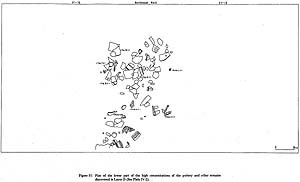
Figure 31: Plan of the lower part of the high concentrations of the pottery and other remains discovered in Layer D (See Plate IV-2). |
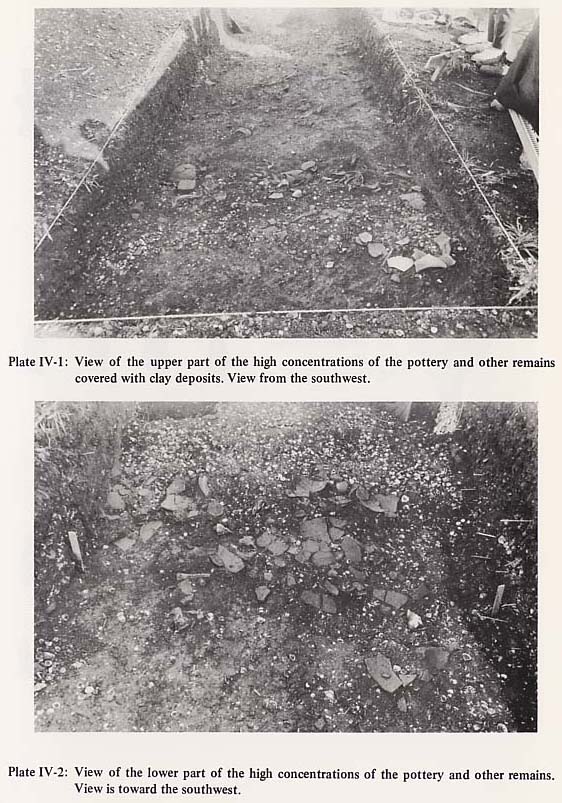
Plate IV-1: View of the upper part of the high concentrations of the pottery and other remains covered with clay deposits. View from the southwest.
Plate IV-2: View of the lower part of the high concentrations of the pottery and other remains. View is toward the southwest. |
(2) The sizes of the fragments are relatively large, and many are nearly whole. As an example, nine of the fifteen fully reconstructable clay vessels from the present excavation belong to this layer (Figs. 22:1, 24:1, 25:1-3, 26:1-4), and two of these nine are undamaged (Figs. 25:2, 26:1, Plate XXVII:3, 4).

Figure 22: Vessel shapes of Angyo II Pottery Type (Scale 1/4).
1 (K-128); Jar with flat rim B of Angyo II type (fragment) From layer D (Plate (XXVII-2).
2 (K-129); Jar with flat rim H of Angyo II type (fragment). Surface material (Plate XXVI-1). |

Figure 24: Vessel shapes of Angyo II Pottery Type (Scale 1/4).
1 (K-132); Jar with flat rim E of Angyo II type (fragment). From layer D (Plate XXVII
2 (K-133); Jar with flat rim B of Angyo II type (fragment). From layer E. |
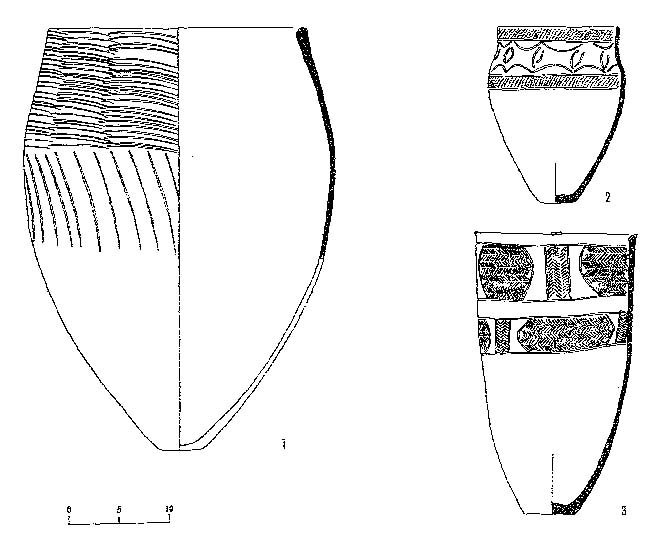
Figure 25: Vessel shapes of Ubayama II Pottery Type (Scale 1/4).
1 (K-134); Jar with flat rim A of Ubayama II type (fragment). From layer D.
2 (K-135); Jar with flat rim C of Ubayama II type. From layer D (Plate XXVII-3).
3 (K-136); Jar with flat rim D of Ubayama II type. From layer D (Plate XXVI-3). |
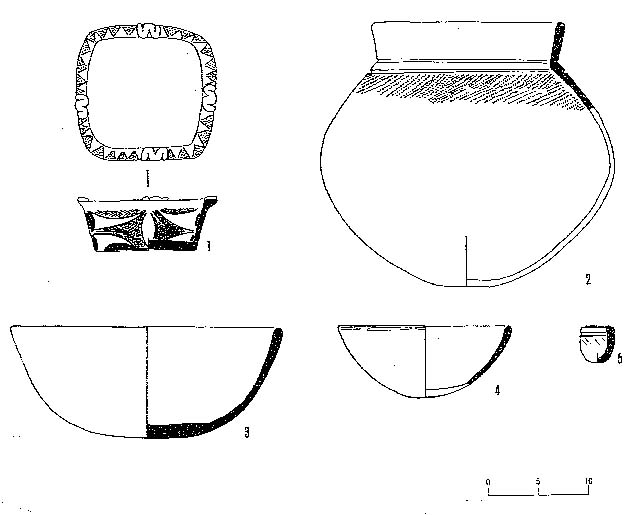
Figure 26: Vessel shapes of Ubayama II Pottery Type (1-4) and unclassified specimen (5) (Scale 1/4).
1 (K-137); Shallow bowl with flat rim A of Ubayama II type. From layer D (Plate XXVII-4).
2 (K-138); Wide-mouthed globular jar of Ubayama II type (fragment). From layer D.
3 (K-139); Shallow bowl with flat rim B of Ubayama II type. From layer D.
4 (K-140); Shallow bowl with flat rim B of Ubayama IItype (fragment). From layer D.
5 (K-141); Unclassified miniature vessel. From layer F. |
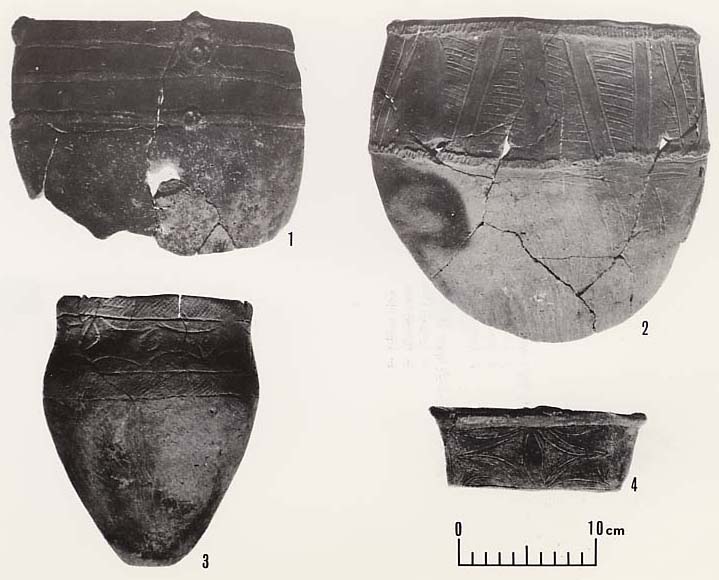
Plate XXVII-1: Jar with flat rim E of Angyo II Pottery Type.
Plate XXVII-2: Jar with flat rim B of Angyo II Pottery Type.
Plate XXVII-3: Jar with flat rim C of Ubayama II Pottery Type.
Plate XXVII-4: Shallow bowl with flat rim A of Ubayama II Pottery Type. |
(3) The shell remains are less concentrated than in other layers. Only three species (Corbicula japonica, Meretrix lusoria and Rapana thomasiana) are found. In the other layers, Corbicula japonica usually predominates, but in this feature Rapana thomasiana comprises the largest percentage.
(4) Among the pottery types (Table 17), Angyo II and coarse plain pottery reach 31.3 and 39.3 percent respectively (the only other instance of a single type of pottery constituting over 30 percent is in Layer G) and Ubayama II reaches 20.2 percent. These three pottery types account for over 90 percent of the pottery in this feature. It is very rare for pottery of very limited types to make up over 90 percent of the total. This feature and Layer G are the only cases at this site (Table 14).
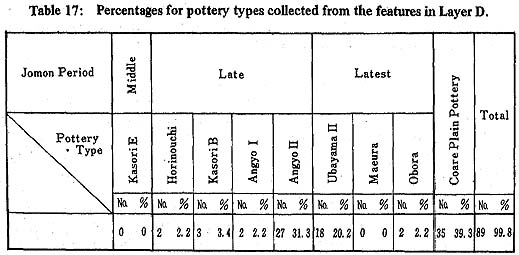
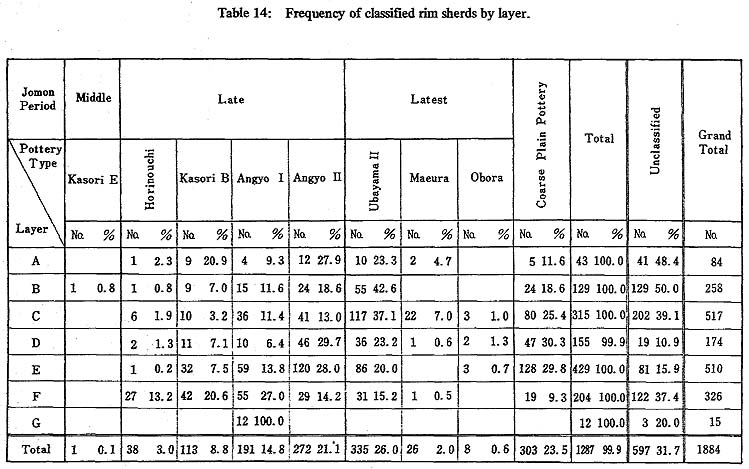
(5) The remains were discovered within and just below the clay deposits (Fig. 30, Plate III:2). The characteristics of the deposits in this feature are strikingly different from those of the other layers. It would be interesting to know whether this feature was piled up as found with special purpose by the Kamitakatsu Shell-midden people and whether this deposit shows the original deposits of the site, the other layers being accidental mixtures.
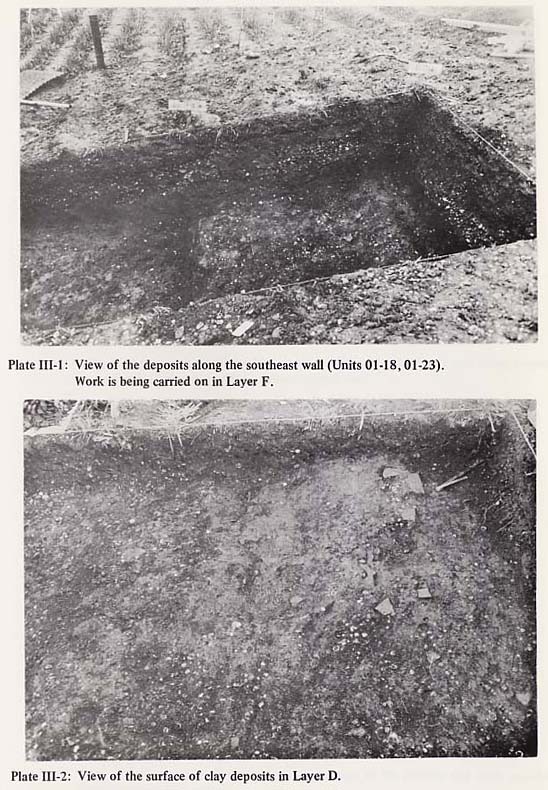
Plate III-1: View of the deposits along the southeast wall (Units 01-18,01-23).Work is being carried on in Layer F.
Plate III-2: View of the surface of clay deposits in Layer D. |